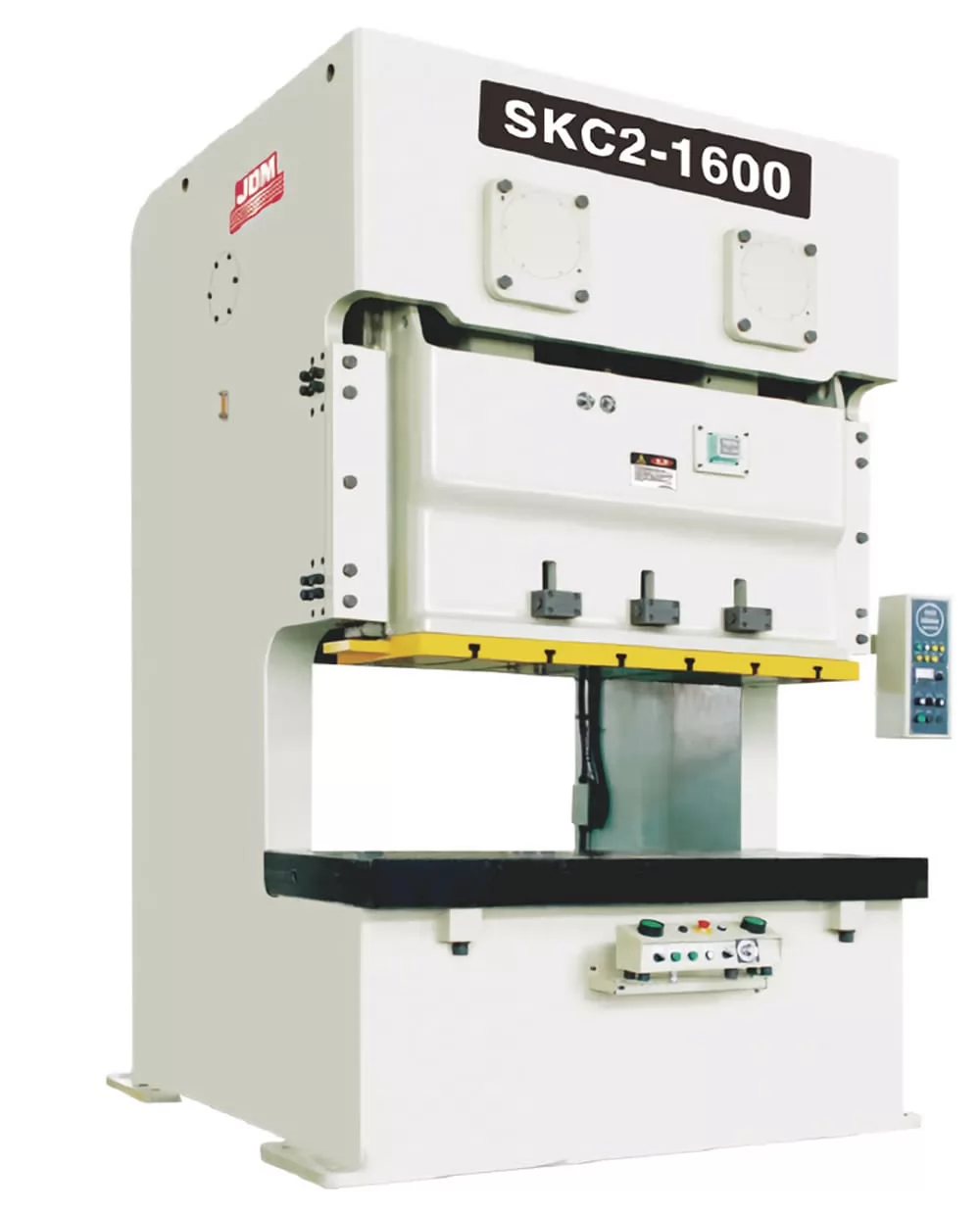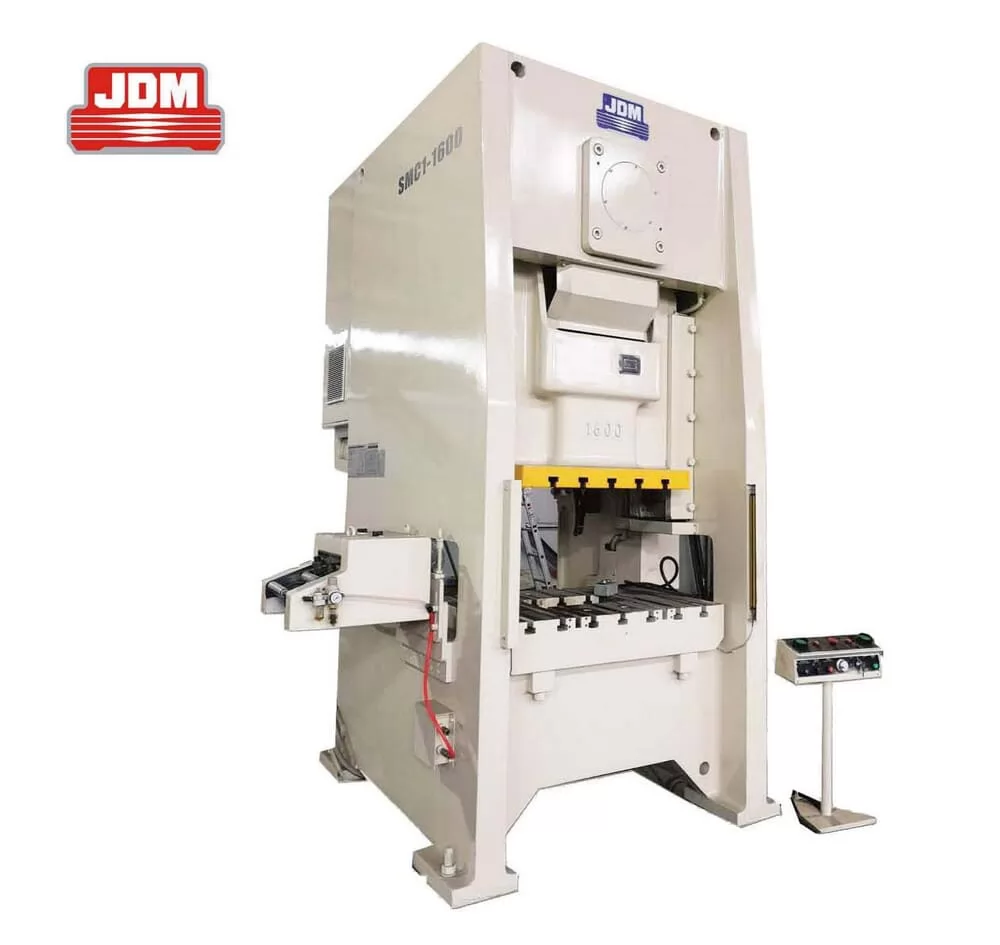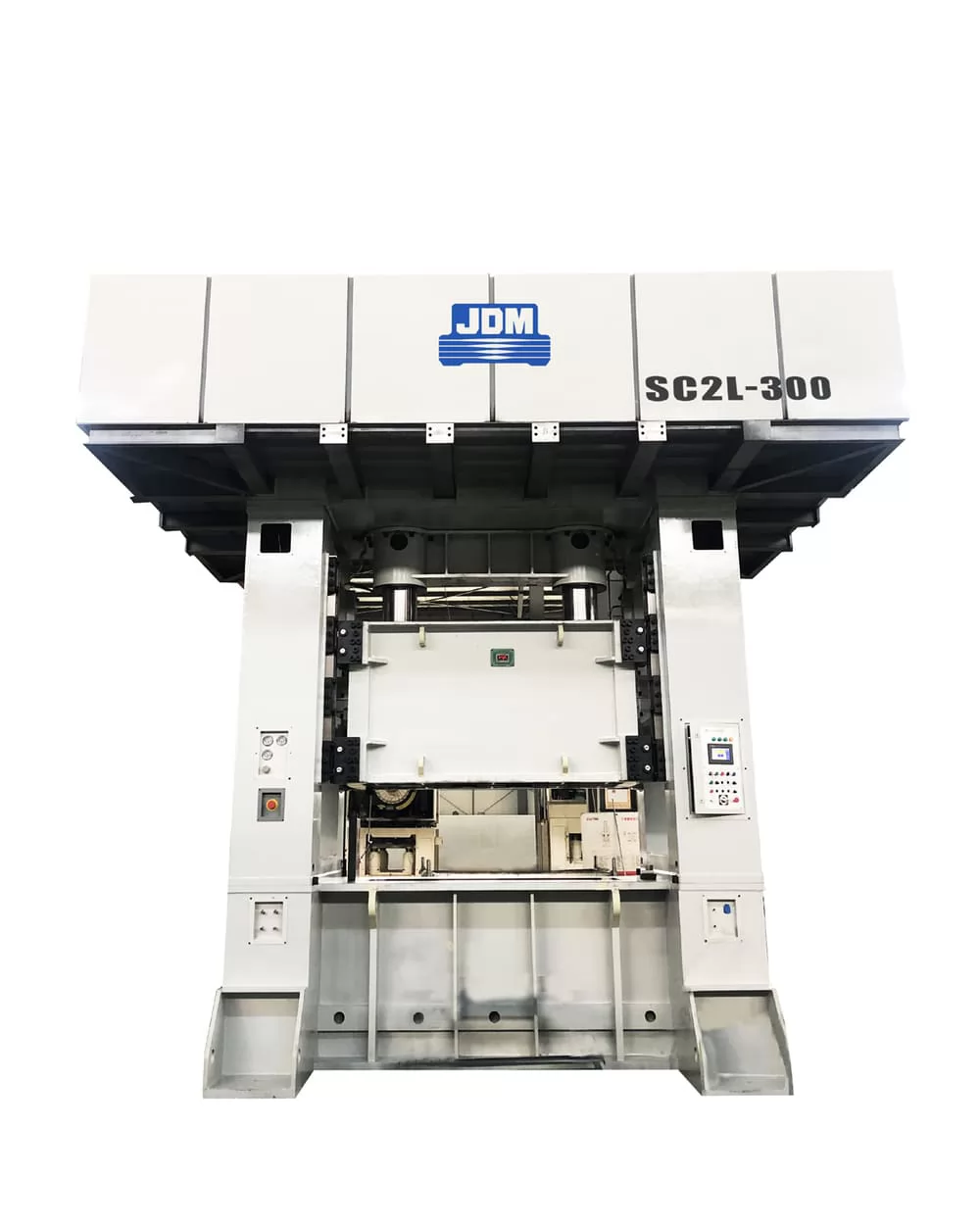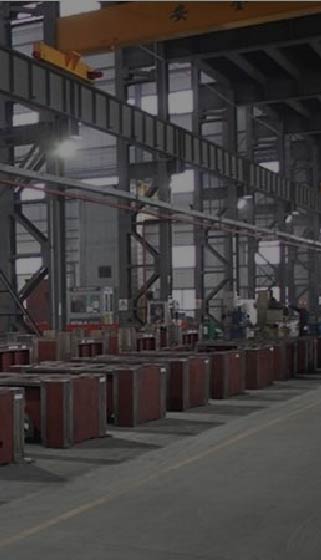







This article delves into the intricate details of mechanical stamping presses, exploring their types, functionalities, and advantages over other pressing methods. As a cornerstone of industrial efficiency, understanding these presses is crucial for any business looking to excel in manufacturing. Whether you are a seasoned professional or new to the field, this comprehensive guide will illuminate the mechanics and applications of these powerful machines.
A mechanical stamping press stands at the heart of metal forming industry, distinguished by its ability to transform metal sheets into various shapes and sizes. Essentially, it's a powerhouse, employing a combination of speed, precision, and force to shape metal parts. The process, known as stamping, involves placing a metal sheet between a die and a press tool. Once activated, the press applies a high-force downward stroke, contouring the metal into a specific shape.
This machinery, an integral part of the manufacturing sector, is often sought after for its efficiency in mass production. Think about the components in cars, appliances, and electronics – many start their journey in a mechanical stamping press. Its versatility allows for a range of operations including punching, embossing, bending, flanging, and coining.
So, what sets a mechanical stamping press apart from other industrial equipment? It's the harmonious blend of rugged durability and meticulous control. Such presses come in various tonnages, tailored to different manufacturing needs, offering a spectrum of capabilities from light trimming tasks to heavy-duty forming operations. In a market where precision and speed are currency, these presses are invaluable assets, maximizing productivity while maintaining high-quality standards.
Within the realm of mechanical stamping presses, diversity in design and functionality is key to catering to various industrial needs. Predominantly, these presses fall into three categories: single-action, double-action, and triple-action presses, each offering unique advantages for different stamping requirements.
Single-action presses, the most basic form of mechanical stamping presses, are known for their simplicity and effectiveness in straightforward stamping tasks. They feature a single ram or slide that delivers the pressing action. Ideal for operations like blanking and simple forming, these presses are the go-to choice for manufacturers seeking reliability and ease of operation in light to medium-duty tasks. Their straightforward design ensures lower maintenance costs and ease of use, making them a popular choice in the manufacturing sector.
Stepping up in complexity, double-action presses offer greater versatility. These presses are equipped with two rams – an outer ram for blank holding and an inner ram that executes the actual forming or drawing operation. This dual-ram system allows for more precise control of the metal sheet, making double-action presses ideal for complex shapes and deeper draws. They are frequently utilized in applications requiring intricate detailing, such as automotive body parts and intricate electronic components.
At the pinnacle of stamping press technology are the triple-action presses. These advanced machines incorporate an additional third ram, further enhancing their capability to manage complex and intricate stamping tasks. The triple-action press is a marvel of engineering, allowing for even more detailed control over the stamping process. This type of press is commonly used for extremely intricate parts, where precision and depth of draw are paramount. They represent the cutting-edge of mechanical stamping press technology, offering unparalleled flexibility and precision in metal forming.

In the dynamic world of mechanical stamping presses, the drive and frame of a press are as crucial as its type. These elements define the press’s functionality, efficiency, and suitability for specific tasks. Generally, presses are categorized based on their drive source - mechanical, hydraulic, servo, and pneumatic - each offering unique benefits for stamping operations. Additionally, these categories can be further classified into one of two frame designs: straight-side or C-frame, with single or double-slide (ram) connections, influencing their performance and application.
Straight-side presses, characterized by their robust construction, have two sides and typically four to eight guideways for the slide. This design minimizes deflection, making these presses more capable of handling off-center loads effectively. They are the workhorses in scenarios requiring high precision and can manage higher tonnages, making them ideal for large-scale and heavy-duty stamping operations. The reduced deflection also contributes to longer die life and better part quality, a significant advantage in high-volume production.
C-frame presses, with their distinctive open C or G shape, are often manually operated. This design provides easier accessibility to the work area, making them suitable for smaller-scale operations and jobs requiring frequent tool changes. However, due to their open form, they are more prone to deflection under off-center loads compared to straight-side presses. The slide in a C-frame press is typically guided by two V-guides or box guides, balancing flexibility with precision for various applications.
Furthermore, the drive mechanism of a press significantly influences its performance. For instance, in a nongeared drive commonly found in mechanical presses, components like the flywheel, clutch, and brake are located on the eccentric or crankshaft. This configuration allows for full press energy availability between half and the top press speed, offering a balance of power and control.
The drive transmission in a mechanical stamping press is a critical component, determining the force exerted on the die and consequently shaping the efficiency and capability of the press. These drives can be categorized into several types: flywheel, single-geared, double-geared, double-action, link (also known as Alternative Slide Motion [ASM]), and eccentric-geared, each tailored for specific stamping needs.
The flywheel-drive is a fundamental design in mechanical presses. In this setup, the electric motor energizes a large flywheel, which stores kinetic energy. This energy is then released through the press cycle, slowing the flywheel by about 10 to 15 percent. The motor compensates for this slowdown, recharging the flywheel for the next cycle. Flywheel-drive presses, often used for piercing, blanking, and bending, are typically rated at full tonnage near the Bottom Dead Center (BDC) of the press cycle. They excel in high-speed operations, with speeds ranging from 125 to over 1000 Strokes Per Minute (SPM), and are particularly effective in progressive die operations.
Single-geared mechanical presses are popular in industries like automotive stamping. These presses have a gear ratio that allows the flywheel to maintain its speed while the press operates at a slower pace, enabling energy conservation and efficient power use. They are typically rated at full tonnage between 0.250 and 0.500 in. from BDC. This type of press is ideal for progressive stamping that requires shallow draw or forms combined with piercing and blanking. The typical speed range for a single-geared press is 40 to 80 SPM, with a stroke length of around 12 inches.
For heavy-duty applications requiring a continuous production speed lower than 28 SPM, the double-geared mechanical press is the go-to choice. This design allows for a slower press operation while maintaining flywheel speed, thus generating high energy. It's particularly effective for stamping high-strength steels and is commonly used in transfer die work. Double-geared presses typically have a full tonnage rating around 0.500 in. from BDC, making them suitable for demanding tasks like drawing, forming, blanking, and piercing with transfer and progressive dies.

In the vast landscape of industrial machinery, the choice of a mechanical stamping press over other types is a strategic decision, hinged on several compelling factors. These presses, known for their reliability, speed, and precision, have carved a niche in the manufacturing sector, especially where high-volume production and efficiency are paramount.
Firstly, mechanical presses boast exceptional speed and consistency. Their ability to operate at high strokes per minute (SPM) makes them ideal for large-scale production runs. This speed is a critical factor in industries like automotive and consumer electronics, where time is synonymous with cost, and efficiency drives profitability.
Another significant advantage is their precision and control. The design of a mechanical press, particularly with advancements like computer numerical control (CNC), allows for meticulous accuracy in stamping. This precision is crucial in producing consistent, high-quality parts, reducing waste and improving overall product standards.
Durability and reliability also set mechanical presses apart. These machines are built to withstand the rigors of heavy use, often operating for decades with proper maintenance. Their robust construction reduces downtime due to mechanical failures, ensuring a steady production flow, which is vital for meeting market demands.
Cost-effectiveness is yet another factor. While the initial investment in a mechanical press may be significant, its long-term operational costs are comparatively lower. This is due to their simpler design, which requires less maintenance and fewer repairs over time. Additionally, mechanical presses typically consume less energy compared to other types, such as hydraulic presses, making them a more economical choice in the long run.
Finally, the versatility of mechanical stamping presses cannot be overstated. They are not limited to just simple stamping tasks but can be adapted for various operations like bending, cutting, and shaping, making them invaluable in diverse manufacturing settings. This adaptability allows businesses to use the same machine for multiple applications, enhancing their investment's value.

When it comes to choosing the right type of press for manufacturing operations, the debate often centers around mechanical presses versus hydraulic presses. Each type has its unique strengths and applications, making them suitable for different manufacturing requirements. Let’s delve into the comparative analysis of these two prominent types of presses.
Mechanical presses are renowned for their high speed and efficiency. They operate at a faster rate compared to hydraulic presses, making them ideal for high-volume production runs. This speed is crucial in industries where time efficiency translates directly into cost savings and increased output. On the other hand, hydraulic presses operate at lower speeds, but they provide greater versatility and control, especially for complex shapes and materials.
When it comes to precision, mechanical presses offer a high degree of accuracy and repeatability, which is essential for mass production of uniform parts. However, hydraulic presses excel in delivering controlled force, which can be precisely adjusted for each job, making them more suitable for applications requiring detailed craftsmanship and customization.
In terms of energy consumption, mechanical presses tend to be more energy-efficient than hydraulic presses. This efficiency translates into lower operational costs over time. However, the initial investment for a mechanical press is often higher than for a hydraulic press. Hydraulic presses, while potentially more costly in terms of energy use, offer more flexibility in terms of setup and operation, which can be a deciding factor for certain applications.
Mechanical presses are typically more durable and require less maintenance than hydraulic presses, largely due to their simpler construction and fewer moving parts. Hydraulic presses, while robust, involve hydraulic systems that may require more frequent maintenance to ensure optimal performance and prevent leaks or other hydraulic issues.
In addition, the environmental impact is another consideration. Mechanical presses, with fewer fluid-based components, pose less risk of environmental contamination compared to hydraulic presses, which rely on hydraulic oils that need proper handling and disposal.
Finally, the choice between a mechanical and hydraulic press often comes down to the specific application. Mechanical presses, with their speed and efficiency, are typically preferred in high-volume, repetitive manufacturing processes. Hydraulic presses, offering greater versatility and precise control, are better suited for custom work, complex shapes, and materials requiring a more delicate touch.
Read More:Hydraulic Press VS Mechanical Press: What's the Different
In conclusion, the mechanical stamping press remains a pivotal force in the manufacturing industry, driving productivity and precision in metal forming. As we have explored various aspects of these presses, their significance and versatility in industrial applications become evident. For those looking to partner with a leader in this field, look no further than JDM, China's leading manufacturer of mechanical presses. Discover more about their cutting-edge technology and how they can revolutionize your manufacturing processes by visiting https://www.jdmpresses.com/ and their dedicated Mechanical Press page at https://www.jdmpresses.com/mechanical-press/. Embrace the power of innovation with JDM, your trusted partner in mechanical press solutions.






